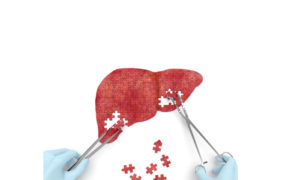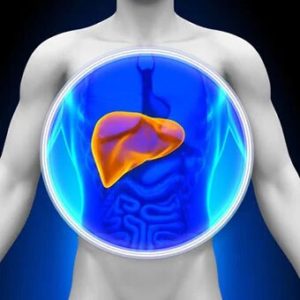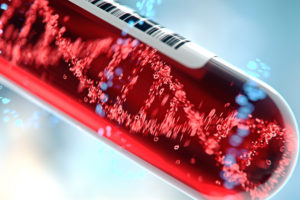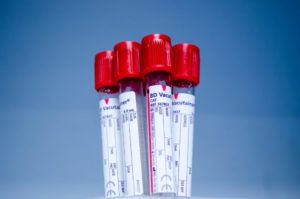Liver Function Tests (LFT)
Liver function tests (LFT) are blood tests, which are commonly performed to assess liver functions or liver injury. LFT is also known by other names such as, liver panel, liver function panel, liver profile hepatic function panel, LFT.
An initial step in detecting liver damage is a simple blood test to determine the level of certain liver enzymes (proteins) in the blood. Under normal circumstances, these enzymes mostly reside within the cells of the liver.
But when the liver is injured for any reason, these enzymes are spilled into the blood stream. Enzymes are proteins that are present throughout the body, each with a unique function.
Enzymes help to speed up (catalyze) routine and vital chemical reactions in the body.
Liver function tests (also known as a liver panel) are blood tests that measure different enzymes, proteins, and other substances made by the liver. These tests check the overall health of the liver.
Following are the different substances often tested at the same time on a single blood sample for LFT:
- Albumin a protein made in the liver
- Total protein. This test measures the total amount of protein in the blood.
- ALP ALP(alkaline phosphatase), ALT (alanine transaminase), AST (aspartate aminotransferase), and gamma-glutamyl transferase (GGT). These are different enzymes made by the liver.
- Bilirubin, a waste product made by the liver.
- Lactate dehydrogenase (LD), an enzyme found in most of the body’s cells. LD is released into the blood when cells have been damaged by disease or injury.
- Prothrombin time (PT), a protein involved in blood clotting.
If levels of one or more of these substances are outside of the normal range, it may be a sign of liver disease.

Aminotransferase Enzymes (ALT, AST)
The aminotransferase enzymes catalyze chemical reactions in which an amino group from one amino acid (amino acids are building blocks of proteins) is transferred from a donor molecule to a recipient molecule, hence, the names “aminotransferases.”
Medical terms can sometimes be confusing, as is the case with these enzymes because they have interchangeable names that commonly appear in both medical and non-medical articles. For example:
- Another name for aminotransferase is transaminase.
- The enzyme aspartate aminotransferase (AST) is also known as serum glutamic oxaloacetic transaminase (SGOT).
- Alanine aminotransferase (ALT) is also known as serum glutamic pyruvic transaminase (SGPT).
Briefly, AST = SGOT and ALT = SGPT; they are enzymes produced by the liver and other types of cells.
Alanine aminotransferase (ALT)
Alanine aminotransferase (ALT) is present primarily in liver cells. In viral hepatitis and other forms of liver disease associated with hepatic necrosis, serum ALT is elevated even before the clinical signs and symptoms of the disease appear.
Although serum levels of both aspartate aminotransferase (AST) and ALT become elevated whenever disease processes affect liver cell integrity, ALT is a more liver-specific enzyme.
Serum elevations of ALT are rarely observed in conditions other than parenchymal liver disease. Moreover, the elevation of ALT activity persists longer than does AST activity.
Aspartate Aminotransferase (AST)
Aspartate aminotransferase (AST) is a transaminase enzyme that catalyzes the conversion of aspartate and alpha-ketoglutarate to oxaloacetate and glutamate.
The AST enzyme was formerly known as serum glutamate oxalate transaminase (SGOT) and is present in all tissues except bone, with highest levels in liver and skeletal muscle. Concentration of AST is elevated after bruising, trauma, necrosis, infection, or neoplasia of liver or muscle.
The AST enzyme is found in cerebrospinal fluid, exudates, and transudates in proportion to the amount of cellular damage.
Where AST (aspartate aminotransferase) and ALT (aminotransferase enzymes) are Found
AST (SGOT) is normally found in a variety of tissues including the liver, heart, muscle, kidney, and brain. It is released into the serum when any one of these tissues is damaged.
For example, the AST level in serum is elevated in heart attacks or with a muscle injury. It is, therefore, not a highly specific indicator of liver injury as its elevation can occur as a result of other injured tissues.
ALT (SGPT) is, by contrast, normally found largely in the liver. This is not to say that it is exclusively located in the liver, but that is where it is most concentrated.
It is released into the bloodstream as the result of liver injury. Thus, it serves as a fairly specific indicator of liver status.

High (Elevated) Levels of AST and ALT
Following are the normal ranges of AST and ALT:
- The normal range of values for AST (SGOT) is about 5 to 40 units per liter of serum (the liquid part of the blood).
- The normal range of values for ALT (SGPT) is about 7 to 56 units per liter of serum.
The ranges of AST and ALT numbers may differ slightly depending on the technique and protocols used by different laboratories worldwide. However, normal reference ranges are routinely provided by each laboratory and printed with each patient’s individual report.
AST (SGOT) and ALT (SGPT) are reasonably sensitive indicators of liver damage or injury from different types of diseases or conditions, and collectively they are termed liver tests or liver blood tests.
However, it must be emphasized that higher-than-normal levels of these liver enzymes should not be automatically equated with liver disease. They may mean liver problems or they may not.
For example, elevations of these enzymes can occur with muscle damage. The interpretation of elevated AST and ALT results depends upon the entire clinical evaluation of an individual, and so it is best done by physicians experienced in evaluating liver disease and muscle disease.
Moreover, the precise levels of these liver enzyme tests do not correlate well with the extent of liver problems or the prognosis (outlook). Thus, the exact levels of AST (SGOT) and ALT (SGPT) cannot be used to determine the degree of liver disease or predict the future prognosis for liver function.
For example, patients with acute viral hepatitis-A may develop very high AST and ALT levels (sometimes in the thousands of units/liter range), but most patients with acute viral hepatitis-A recover fully without residual liver disease.
Again, patients with chronic hepatitis-C infection typically have only a little elevation in their AST and ALT levels while having substantial liver injury and even advanced scarring of the liver (cirrhosis) from ongoing minor inflammation of the liver.
Types of Liver Function Tests (LFT)
A liver function test is one of a group of tests that check levels of certain enzymes and other proteins in the blood. Some of the tests look for enzymes that are found in liver disease and when the liver is damaged. Others check that the liver is working properly, the way it should.
Following are some of the blood tests reflect liver function:
- Coagulation panel (prothrombin time or PT, and international normalized ratio or INR): These tests measure blood’s ability for normal clotting and prevention of bleeding and bruising. This is the function of certain proteins called clotting factors that normally are produced in the liver. Normal values are about 9.5 to 13.8 seconds.
- Albumin level (hypoalbuminemia): Albumin is a very common protein found in the blood with a variety of functions. It also is produced only in the liver, and if its levels are lower than normal it can be suggestive of chronic liver disease or liver cirrhosis. Of note, many conditions other than liver disease also may cause low albumin levels. Normal values are about 3.5 to 5 g/dL.
- Bilirubin: This molecule is a byproduct of the routine destruction of red blood cells occurring in the liver. It is normally released as bile in the feces. Elevation of the bilirubin can suggest liver dysfunction. However, other conditions with increased destruction of red blood cells also can cause elevated bilirubin levels despite normal liver function. Normal values are about 0.1 to 1.0 mg/dL.
- Platelet count: Low platelet count (thrombocytopenia) has many causes, one of which can be advanced liver disease. Normal platelet counts are about 150,000 to 400,000 per (µL).
- Glucose: Glucose level is maintained in the body by a variety of mechanisms. The liver can release glucose in the blood for nourishment of other cells in case of starvation with insufficient oral intake of glucose. This process, called gluconeogenesis, is another major function of the liver. In advanced liver disease, this function of the liver can be compromised leading to unusually low glucose levels in the absence of adequate oral intake. Again, a large number of patients with liver cirrhosis become glucose intolerant and develop diabetes.
- GGT (Gamma-glutamyl transpeptidase): This enzyme is thought to indicate possible liver damage; the higher the abnormal level, the more likely there is liver damage. Normal levels of GGT are about 9 to 48 U/L.
- ALP (alkaline phosphatase): The liver synthesizes the highest amounts of this enzyme so high levels in the blood may suggest liver injury among other causes. Normal levels of ALP are about 45 to 115 U/L.
- LD or LDH (Lactate dehydrogenase): This enzyme may be elevated in many types of diseases, including liver disease. Normal levels are about 122 to 222U/L.
Reasons for Abnormal Liver Tests
Abnormal liver tests may be detected a variety of liver conditions in the blood. Some of those are the following:
- Mild to moderate elevations of the liver enzymes are common. They are often unexpectedly encountered on routine blood screening tests in otherwise healthy individuals. The AST and ALT readings in such cases are usually between twice the upper limits of normal and several hundred units/liter. One of the most common causes of mild to moderate elevations of these liver tests is a condition referred to as fatty liver disease (steatohepatitis or hepatic steatosis). In the United States, the most frequent cause of fatty liver disease is alcohol abuse.
Alcoholic fatty liver disease only happens in people who are heavy drinkers, especially those who have been drinking for a long period of time.
The risk is higher for heavy drinkers who are women, have obesity, or have certain genetic mutations.
Other causes of fatty liver include diabetes mellitus, and obesity. Fatty liver disease tests are composed of several tests including blood tests, CT and/or MRI scan tests, and in some patients, a liver biopsy.
- Hepatitis-B and Hepatitis-C are other causes of chronic mild to moderate liver enzyme elevation. In these conditions, ALT and AST may be only slightly high and the degree of abnormality in liver function tests can indicate the degree of injury.
- Chronic and acute alcohol use also can commonly cause abnormal liver blood tests. In alcoholic hepatitis, the range of liver tests can vary greatly. In chronic alcohol liver disease or alcoholic cirrhosis, slight elevation of ALT and AST may be observed, whereas, in acute alcoholic hepatitis, high liver enzyme numbers are often seen.
- Some medications can be responsible for a mild to moderate increase in the liver enzyme tests.
Medications that can cause increased liver enzyme tests (AST and ALT) levels
Following are examples of some of the common medications with potential liver toxicity:
Pain Relief Medications
- Aspirin
- Acetaminophen (Tylenol)
- Ibuprofen (Advil, Motrin)
- Naproxen (Naprosyn, Naprelan, Anaprox, Aleve)
- Diclofenac (Voltaren, Cataflam, Voltaren-XR)
- Phenylbutazone (Butazolidine)
Anti-seizure Medications
- Phenytoin (Dilantin)
- Valproic acid ( Depakote)
- Carbamazepine (Tegretol)
- Phenobarbital
Antibiotics
- Tetracyclines (Achromycin)
- Sulfonamides
- Isoniazid (Nydrazid, Laniazid)
- Sulfamethoxazole (Gantanol)
- Trimethoprim(Trimpex; Proloprim, Primsol)
- Nitrofurantoin (Macrodantin, Furadantin, Macrobid)
- Fluconazole (Dilflucan) and other anti-fungals
Cholesterol Lowering Drugs (Statins)
- Lovastatin (Mevacor, Altocor)
- Pravastatin (Pravachol)
- Atorvastatin (Lipitor)
- Fluvastatin (Lescol)
- Simvastatin (Zocor)
- Rosuvastatin (Crestor)
- Niacin
Cardiovascular Drugs
- Amiodarone (Cordaone)
- Hydralazine (Apresoline)
- Quinidine (Quinaglute, Quinidex)
Other Drugs
- Antidepressant drugs of the tricyclic type
With drug-induced liver enzyme abnormalities, the enzymes usually normalize weeks to months after stopping the medications. Typically, the physician will want to monitor the patient’s liver enzymes over time to confirm that the values are normalizing.
Diseases that can cause very high AST or ALT levels
AST and ALT serum levels in some liver conditions can range anywhere from ten times the upper limits of normal to thousands of units/liter.
The highest levels of AST and ALT are found with disorders that cause rapid death of numerous liver cells (extensive hepatic necrosis). Although this degree of liver enzymes elevation is not common, it can occur in such conditions as:
- Acute viral hepatitis A or B
- Profound liver damage inflicted by toxins as from an overdose of acetaminophen (brand-name Tylenol) or mushroom poisoning
- Prolonged collapse of the circulatory system (shock) when the liver is deprived of fresh blood providing oxygen and nutrients
Also, very high AST and ALT levels can be a result of severe muscle diseases.

Bay Biosciences is a global leader in providing researchers with high quality, clinical grade, fully characterized human tissue samples, bio-specimens and human bio-fluid collections.
Samples available are cancer (tumor) tissue, cancer serum, cancer plasma cancer PBMC and human tissue samples from most other therapeutic areas and diseases.
Bay Biosciences maintains and manages its own bio-repository, human tissue bank (biobank) consisting of thousands of diseased samples (specimens) and from normal healthy donors available in all formats and types.
Our biobank procures and stores fully consented, deidentified and institutional review boards (IRB) approved human tissue samples and matched controls.
All our human tissue collections, human specimens and human bio-fluids are provided with detailed samples associated patient’s clinical data.
This critical patient’s clinical data includes information relating to their past and current disease, treatment history, lifestyle choices, biomarkers and genetic information.
Patient’s data is extremely valuable for researchers and is used to help identify new effective treatments (drug discovery & development) in oncology, other therapeutic areas and diseases.
Bay Biosciences banks wide variety of human tissue samples and biological samples including cryogenically preserved at – 80°C.
Including fresh frozen tissue samples, tumor tissue samples, FFPE’s, tissue slides, with matching human bio-fluids, whole blood and blood derived products such as serum, plasma and PBMC’s.
Bay Biosciences is a global leader in collecting and providing human tissue samples according to the researchers specified requirements and customized, tailor-made collection protocols.
Please contact us anytime to discuss your special research projects and customized human tissue sample requirements.
Bay Biosciences provides human tissue samples (human specimens) from diseased and normal healthy donors which includes:
- Peripheral whole-blood,
- Amniotic fluid
- Bronchoalveolar lavage fluid (BAL)
- Sputum
- Pleural effusion
- Cerebrospinal fluid (CSF)
- Serum (sera)
- Plasma
- Peripheral blood mononuclear cells (PBMC’s)
- Saliva
- Buffy coat
- Urine
- Stool samples
- Aqueous humor
- Vitreous humor
- Kidney stones (renal calculi)
- Other bodily fluids from most diseases including cancer.
We can also procure most human bio-specimens and can-do special collections and requests of human samples that are difficult to find. All our human tissue samples are procured through IRB approved clinical protocols and procedures.
In addition to the standard processing protocols Bay Biosciences can also provide human plasma, serum, PBMC bio-fluid samples using custom processing protocols, you can buy donor specific sample collections in higher volumes and specified sample aliquots from us.
Bay Biosciences also provides human samples from normal healthy donors, volunteers, for controls and clinical research, contact us Now.
日本のお客様は、ベイバイオサイエンスジャパンBay Biosciences Japanまたはhttp://baybiosciences-jp.com/contact/までご連絡ください。

